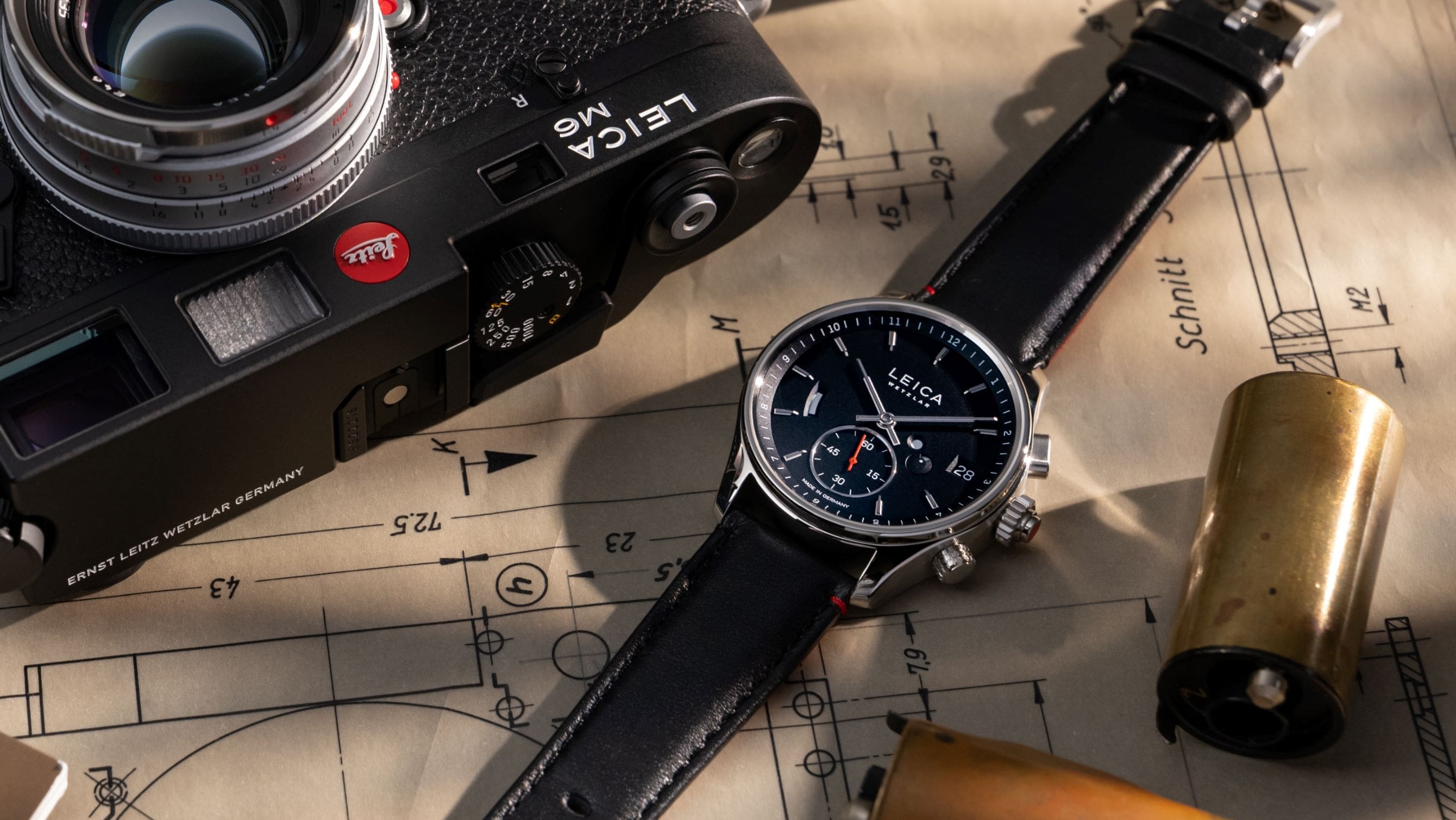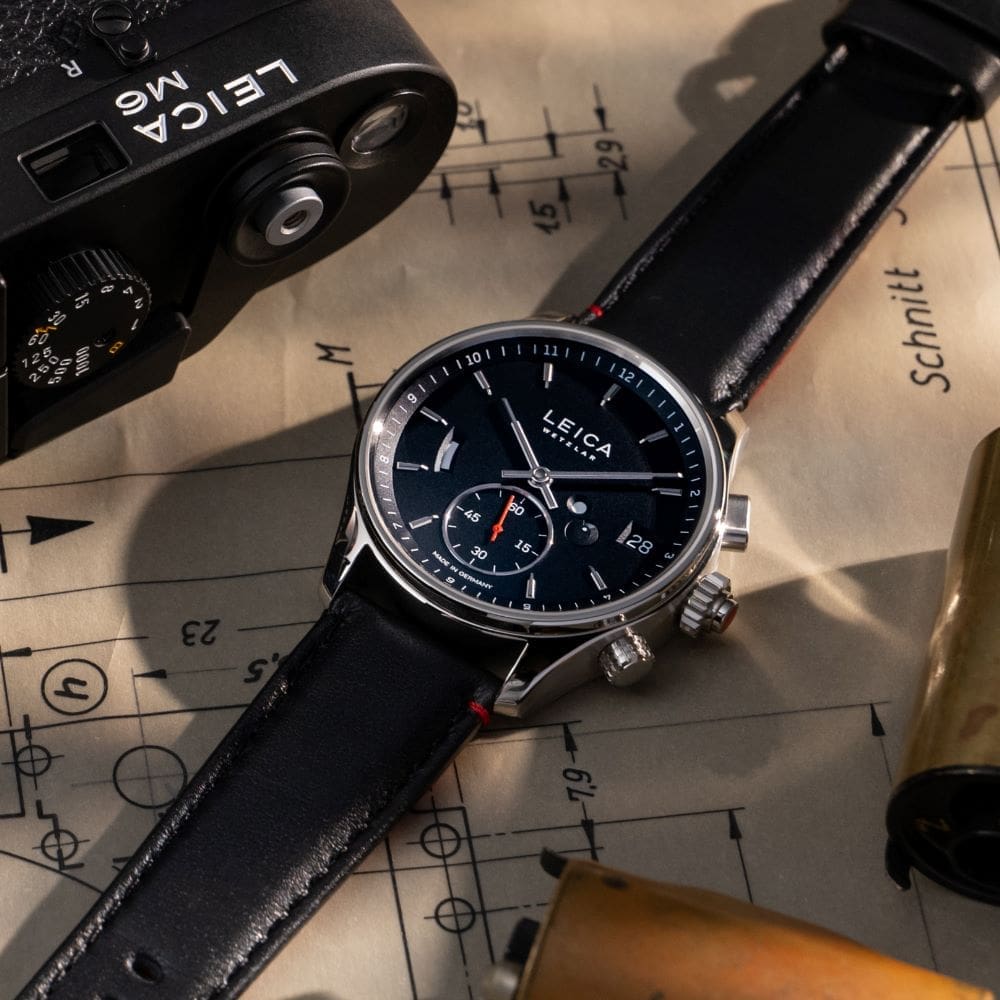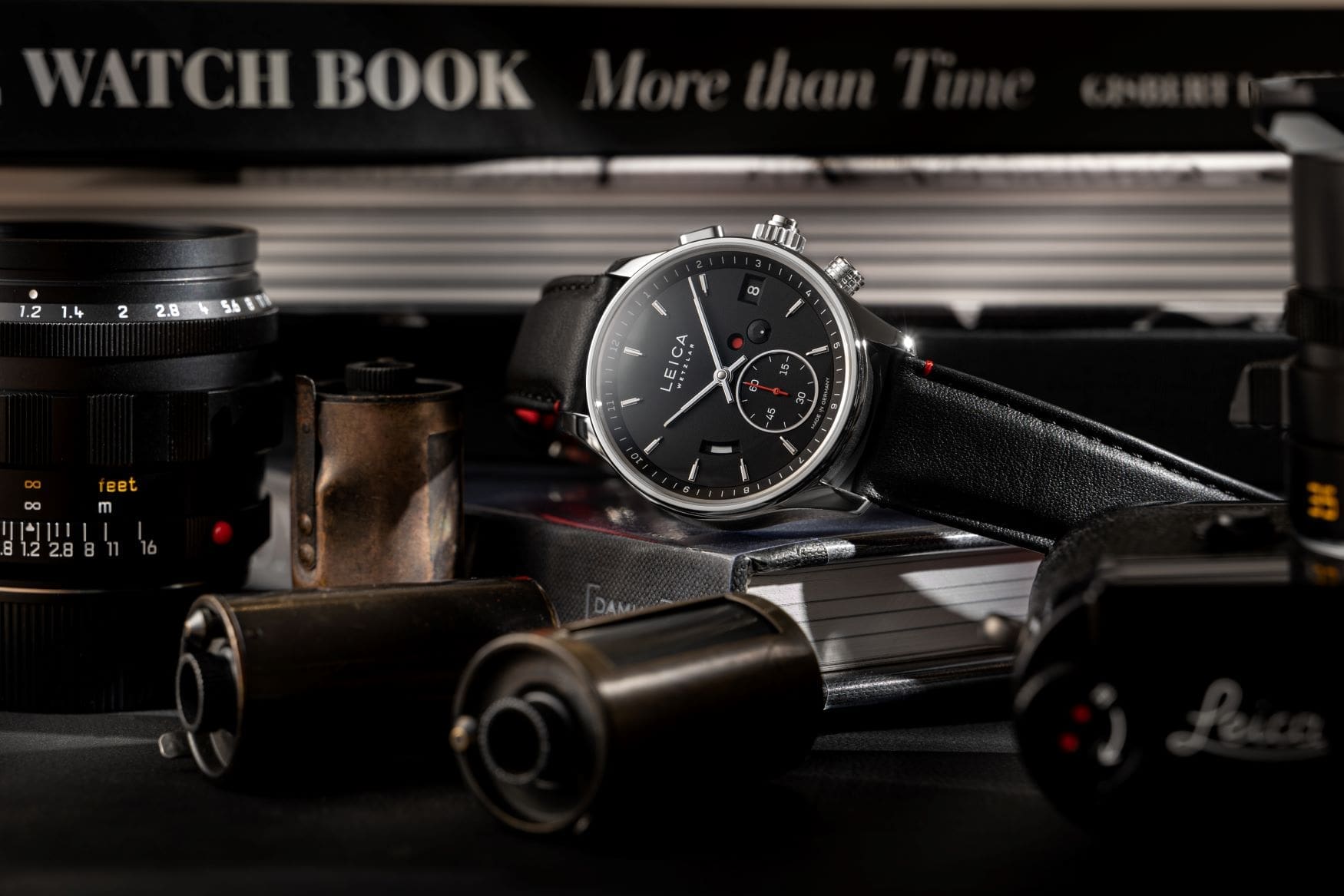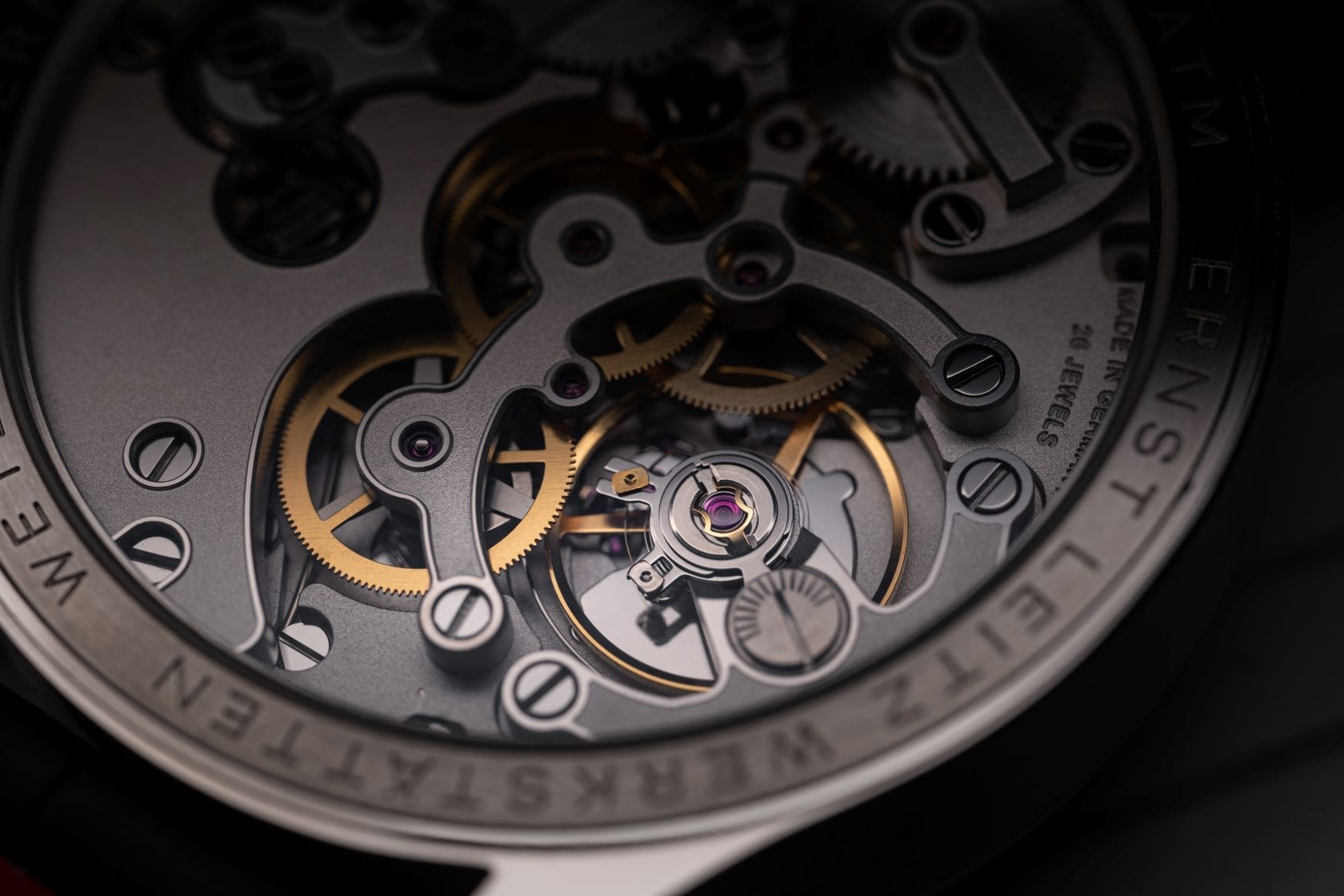3 reasons you may want to take Leica seriously as a watchmaker
Jamie WeissThere are few brands in the world with the same sort of cache as Leica. The German firm has been deeply influential in the development of modern photography and is widely acknowledged as producing some of the finest cameras on the planet. Incredibly expensive, incredibly well-made, and incredibly prestigious, Leica enjoys a truly dedicated cult following – if you’re serious about photography (and have a few pesos spare), you use a Leica. Indeed, Australian master watchmaker and film camera aficionado Nicholas Hacko has even dubbed Leica “the Patek Philippe of cameras” – a rather apt moniker considering how refined and prestigious Leica cameras are.
When Leica initially announced that they were getting in on the luxury watch game, however, more than a few eyebrows were raised. But, after seeing and wearing Leica’s first forays into watchmaking for myself, I’m utterly convinced by the seriousness and value of Leica’s offering.
They’ve nailed the aesthetic
Leica cameras have an unmistakable aesthetic: frames made of big slabs of aluminium, curvaceous black cases, little hints of red from the logo and alignment dots… They’re clean, streamlined, and robust, yet also graceful and somewhat demure. It would be hackneyed to talk about them being ‘Bauhaus’ but they certainly do embody classic Bauhaus design principles: they’re both beautiful and functional.
Leica’s first two watches, the ZM 1 and ZM 2 (‘ZM’ stands for ‘Zeitmesser’, German for ‘timekeeper’), also embody these principles whilst paying homage to Leica cameras – yet in a way that’s not on the nose. Indeed, the camera-inspired complications that really make the ZM 1 and 2 stand out aren’t just clever in how they nod to photography, but are genuinely innovative and useful in their own right.
Case in point: both watches feature a novel crown mechanism where, rather than pulling out the crown to adjust the time, you push in a button on the crown, which then hacks the watch… The button, which is tipped with a red dot, resembles the shutter release on a camera. Leica says this reflects the way that when you take a photo, time stops – it’s a great bit of storytelling. Another fun touch is that when you press in the crown, a small aperture changes from white to red to visually identify that time’s stopped. It’s cute, but also practical.
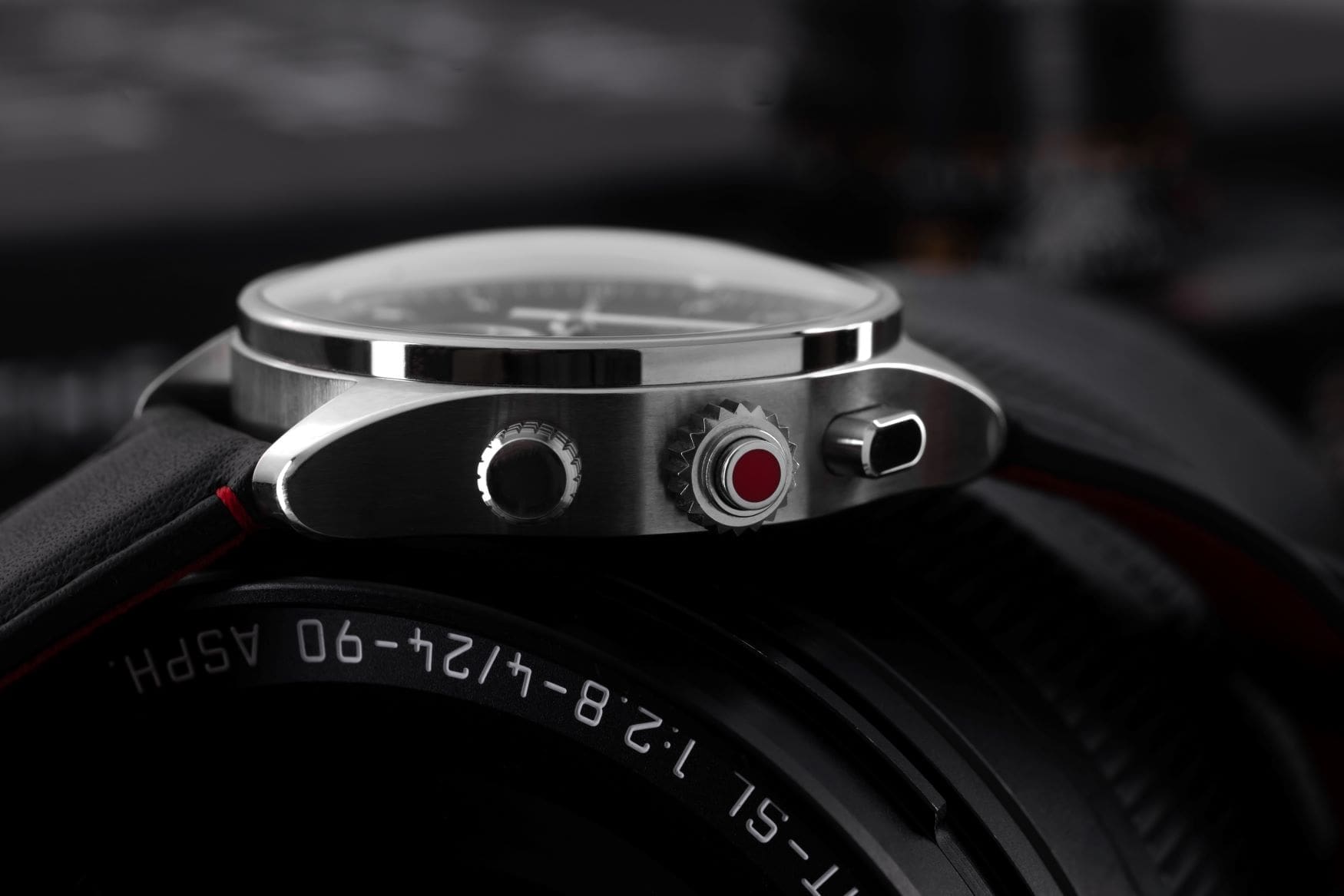
It doesn’t stop there. The ZM 1 and 2’s power reserve indicator features closing blades that indicate remaining power, again resembling a camera. The pusher at 2 o’clock cycles through the date display, with both the same noise and feel as a camera’s shutter release. Using a pusher to advance the date has the added advantage of reducing wear on the crown, too. The ZM 2, which features a GMT complication, features an AM/PM indicator at 3 o’clock (between the hacking indicator and the date window) that resembles a camera dial. The internal GMT bezel is also adjusted via a crown at 4 o’clock, which features knurling that resembles a camera dial. Finally, the watches’ crystals are extremely domed, resembling convex camera lenses.
It would be very easy for Leica to be fully on the nose when it comes to referencing cameras in their watches, but all these complications have a use; a reason to exist. They’re there not just to nod to photography, although they do that brilliantly.
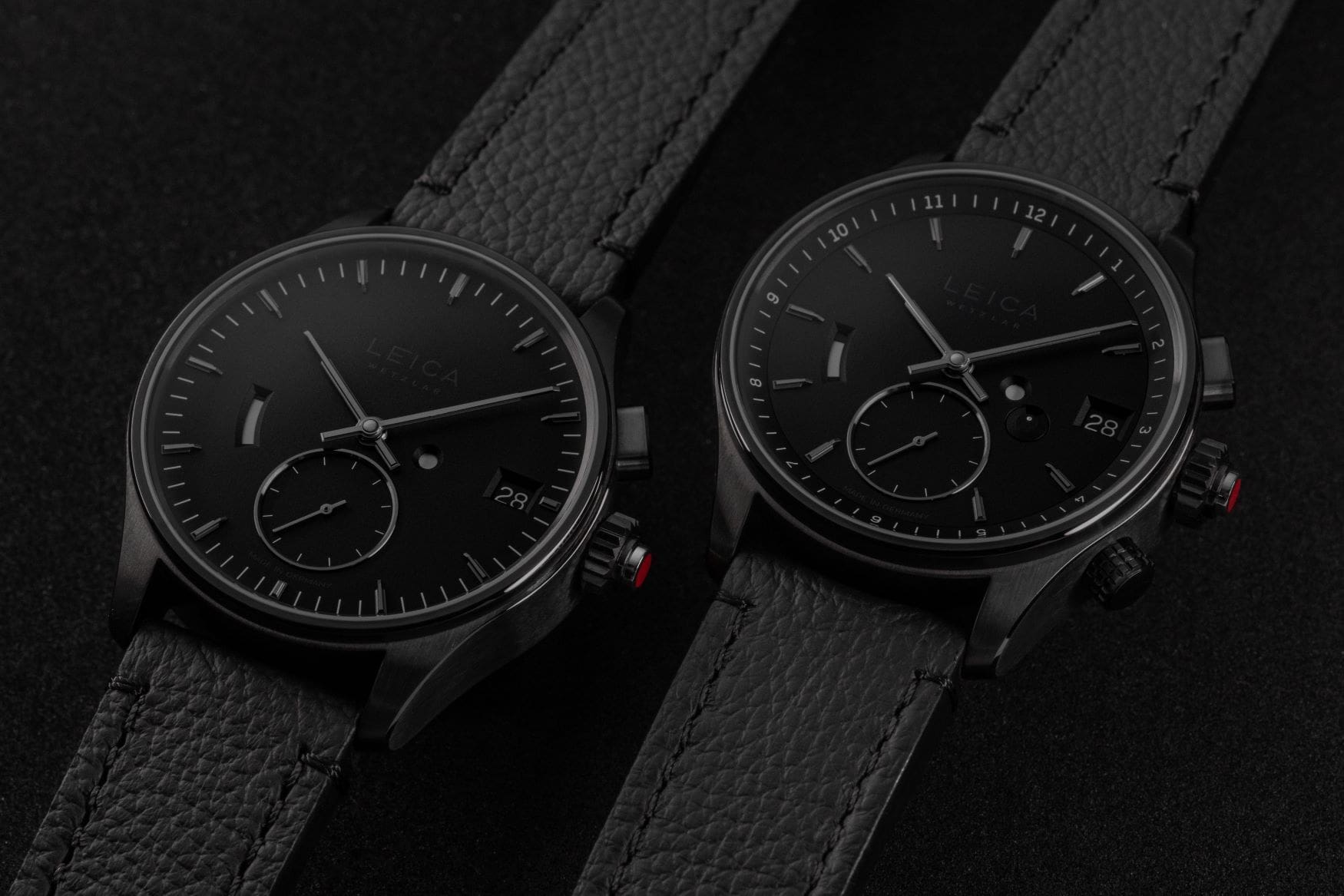
Leica has also unveiled two new blacked-out PVD-coated takes on the ZM 1 and 2 – the ZM 1 and 2 Monochrom, which reference Leica’s Monochrom range of cameras. These digital cameras feature sensors without colour filter arrays, that is, they only take black-and-white photos. These two watches are a bit more style over substance than their non-PVD siblings, and they do look pretty cool – with the only hint of colour coming from that iconic red dot on the crown.
Expertise in micro-machining
Aesthetics aside, what business does Leica have making watches, I hear you ask? Well, there’s an easy answer: fine manufacturing, whether for watches or cameras, is very similar. Leica as a firm is more qualified than most to embark on making watch components. Watch crystals and camera lenses, date pushers and shutter releases, watch straps and camera straps… Camera-making and watchmaking are both using the same playbook. Leica are experts in micro-machining.
Leica’s connection to the watch world actually goes back right to the very start. Ernst Leitz, founder of Leica, originally embarked on a watchmaking internship in Switzerland before he specialised in precision optics. Okay, maybe we’re getting a bit schmaltzy here, but this is all to say that watches and cameras are hardly strange bedfellows. Indeed, there are a few watch brands who’ve also dabbled in making cameras, the most notable of which is LeCoultre, who turned to making cameras during the Great Depression to help keep the lights on. If JLC can make cameras, why can’t Leica make watches?
Working with the right people
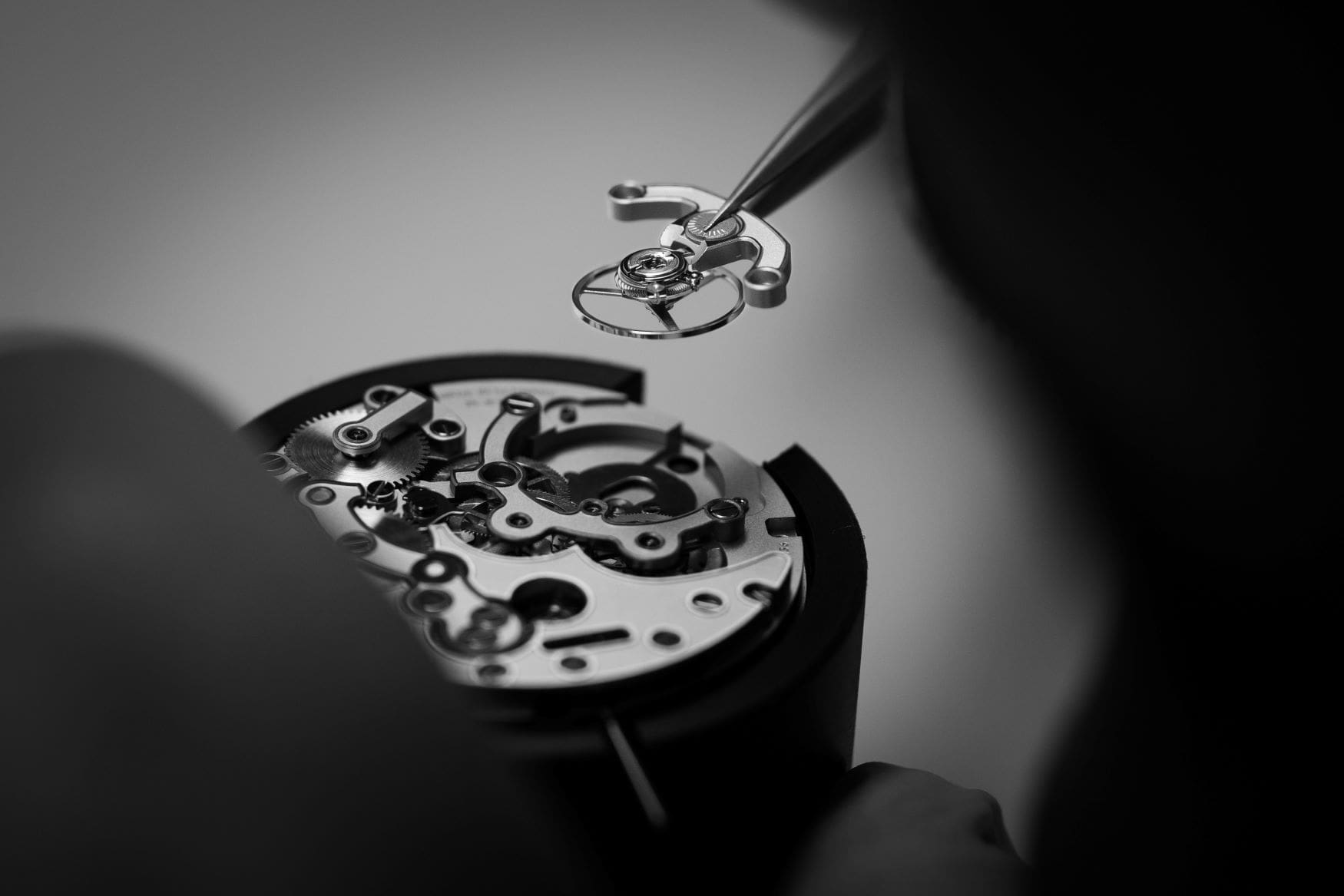
Where Leica haven’t been able to do something in-house, they’ve outsourced to reputable suppliers. Really, I’m talking about the Leica ZM 1 and 2’s movement here, which is made exclusively for Leica by Lehmann Präzision, a highly regarded industrial manufacturing company that itself branched out into watchmaking in 2011, which is known for exclusively using in-house movements. Coincidentally, Lehmann also makes many of the lenses and precision components for the camera business.
The ZM collection’s movements were designed by Reinhard Meis, the last he devised before he passed away earlier this year, and the man instrumental in reviving A. Lange & Söhne alongside Günter Blümlein, helping design the original Lange 1, Langematik and Datograph, and their movements. Daniel Blunschi and Marcus Eilinger, the designers of Leica’s watches, also have a long history in the watch world, having penned designs for brands as diverse as IWC Schaffhausen, Swatch and H. Moser & Cie.
Is this all beginning to paint a picture? Leica’s done this properly. They’ve worked with some of the most talented people in the business, bringing in an enormous amount of expertise in micro-machining, and have introduced some quietly quite brilliant watches that perfectly meld the worlds of horology and photography.
The only sticking point, in my opinion, is the price. The ZM 1 will set you back US$11,000 while the ZM 2 comes in at US$15,000 – and expect a $500 premium for the Monochrom models. That’s a lot of money for what’s effectively a new brand… But Leica fans are already used to paying crazy figures for their cameras. The key will be if Leica can convince the photographically uninclined to give their watches a look-in.
Leica ZM collection pricing and availability:
The Leica ZM collection is available now in select Leica boutiques. Price: US$11,000 (ZM 1), US$11,500 (ZM 1 Monochrom), US$15,000 (ZM 2), US$15,500 (ZM 2 Monochrom)
| Brand | Leica Watch |
| Model | ZM 1 ZM 2 |
| Case Dimensions | 41mm (D) x 14.5mm (T) x 48.1mm (LTL) |
| Case Material | Stainless steel (PVD-coated for Monochrom models) |
| Water Resistance | 50 metres |
| Crystal(s) | Domed sapphire |
| Dial | Black |
| Strap | Black calf or alligator leather |
| Movement | Leica ZM 1 and ZM 2, made by Lehmann, manually wound |
| Power Reserve | 60 hours |
| Functions | Hours, minutes, small seconds, hacking indicator, power reserve, date (ZM 1) Hours, minutes, small seconds, hacking indicator, power reserve, GMT, AM/PM indicator (ZM 2) |
| Availability | Now, from select Leica stores |
| Price | US$11,000 (ZM 1) US$11,500 (ZM 1 Monochrom) US$15,000 (ZM 2) US$15,500 (ZM 2 Monochrom) |




